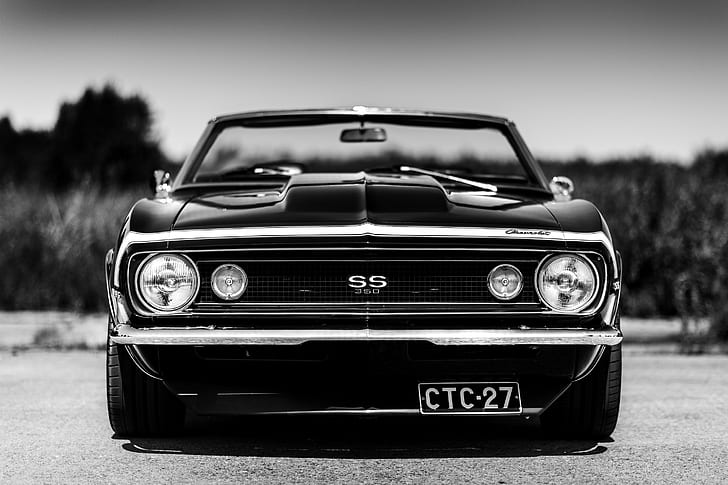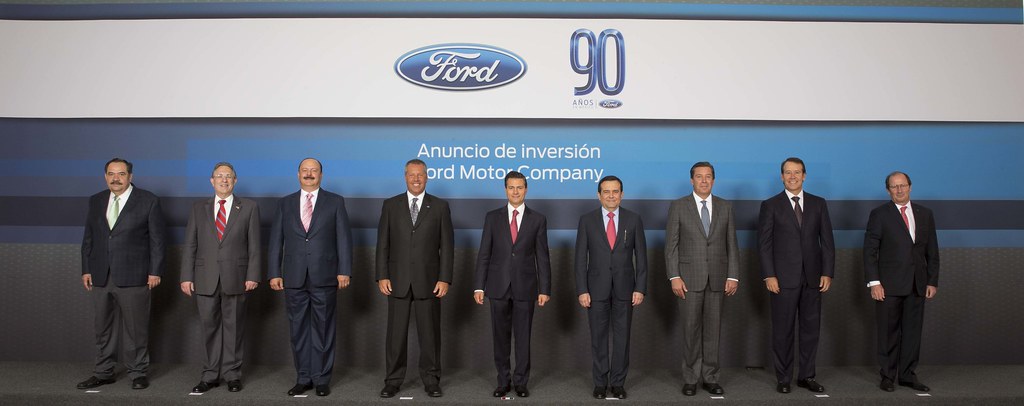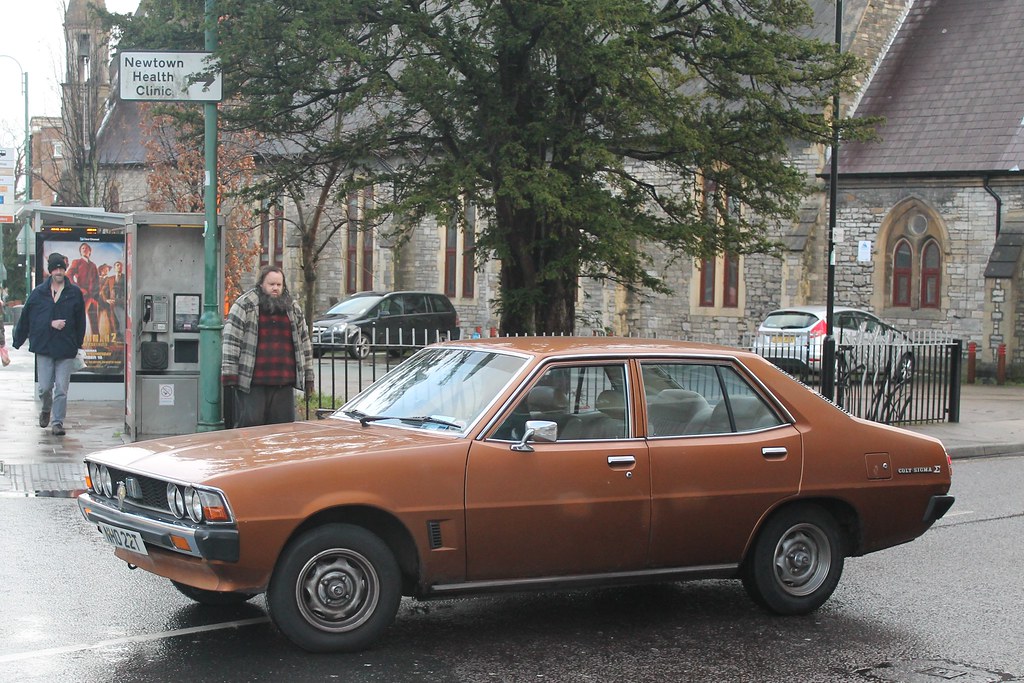
Ah, the intoxicating scent of gasoline, the rumble of a finely-tuned engine, the gleam of polished chrome under a summer sky – there’s nothing quite like it, is there? For those of us who live and breathe cars, a vintage ride isn’t just a mode of transport; it’s a rolling piece of history, a testament to an era when design was art and engineering was a pure, unadulterated passion. These aren’t merely machines; they are legends cast in metal, whispering tales of racetracks, daring drives, and an unyielding pursuit of perfection.
Yet, among these revered classics, a select few stand head and shoulders above the rest. These are the automotive equivalent of a perfectly aged single malt – they simply get better, cooler, and outrageously more valuable with every passing year. We’re talking about the ‘Gold Standard,’ the machines that defy depreciation, whose scarcity and sheer brilliance have transformed them from mere vehicles into investment-grade masterpieces. This isn’t just about horsepower or top speed; it’s about the indelible mark they’ve left on the world, the emotional connection they forge, and the pure, unadulterated cool factor that money simply can’t buy… unless, of course, you have millions to spare.
So, buckle up, because we’re about to embark on a thrilling journey through the crème de la crème of classic automobiles. We’ll be popping the bonnets on some of the most sought-after vintage rides, examining what makes them truly special, why their values continue to rocket into the stratosphere, and why owning one isn’t just an investment, it’s an absolute dream come true for any discerning enthusiast. Prepare to be captivated by engineering breakthroughs, cultural impacts, and sheer driving pleasure – this is where history meets horsepower.
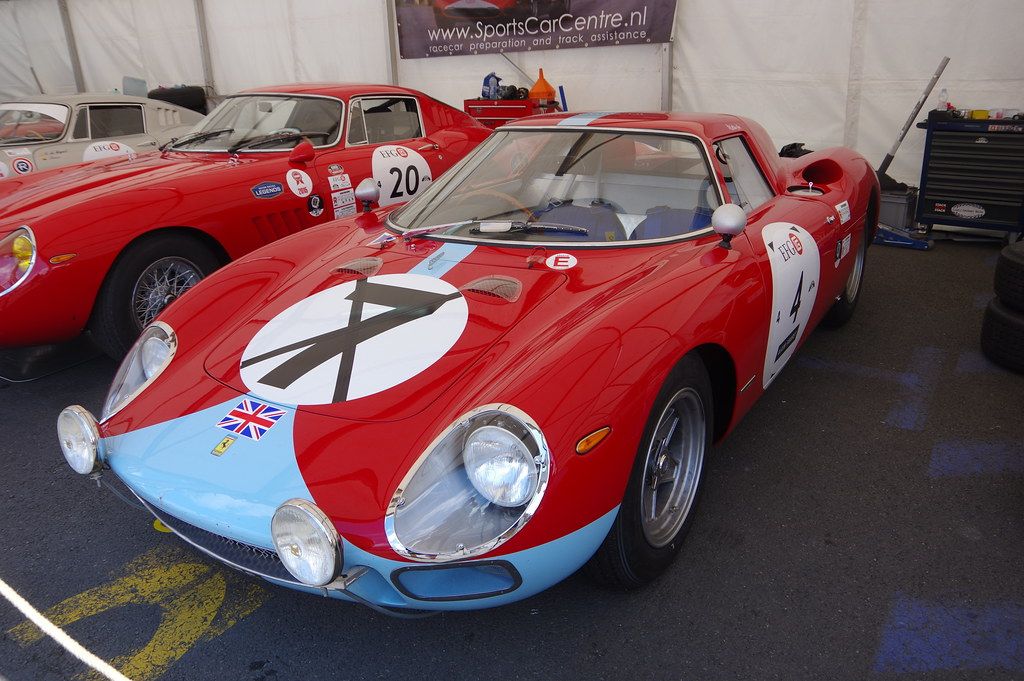
1. **1964 Ferrari 250 LM**Ah, the Ferrari 250 LM. Just the name rolls off the tongue like a perfectly executed downshift. Only 32 of these glorious machines ever left the factory gates, which, let’s be honest, is a criminally low number for something this magnificent. But then again, true greatness is often found in scarcity, isn’t it? These aren’t just cars; they’re rolling pieces of art, each one a testament to Maranello’s unyielding pursuit of perfection and a fierce contender on the international racing circuit.
What makes them truly special? Well, for starters, the highest-priced 250 LM ever sold fetched a cool $17.6 million back in 2015. But it’s not just about the money; it’s about the legend. This very car took first place at the grueling 24 Hours of Le Mans in 1965, marking it as the *last* Ferrari to ever clinch that victory. Think about that for a second – the absolute last. It’s a historical bookmark, a permanent testament to Ferrari’s racing prowess etched into the very fabric of motorsport, ensuring its place in the annals of automotive history.
Underneath that impossibly beautiful Scaglietti bodywork lurks a beast of an engine: a 3.3-liter V-12, churning out a very respectable 320 horsepower. That was enough to propel this lithe machine to a top speed of 180 mph, all while weighing a mere 1,940 pounds. It was a ballerina with a sledgehammer, capable of both brutal speed and sublime handling, making it an absolute nightmare for competitors and a dream for drivers. It’s no wonder collectors practically duel over them; you’re not just buying a car, you’re acquiring a legend, a victory, and a piece of automotive immortality.
Car Model Information: 2020 Ford Mustang GT Premium
Categories: All articles that may contain original research, All articles with style issues, All articles with unsourced statements, Articles that may contain original research from September 2025, Articles with short description
Summary: The Ferrari P was a series of rear mid-engined two seat sports prototype racing car models produced by Ferrari during the 1960s and early 1970s to be raced mainly by the factory Scuderia Ferrari racing team. When a double digit number of identical cars was planned for homologation and sale to customers, the codes LM (Le Mans) or S (Sportscar) were used instead.
Although Enzo Ferrari witnessed the rear mid-engined Auto Union racing cars of the 1930s, and with Cooper dominating F1 with back-to-back World Championship wins, 1959 and 1960, he resisted to move the engine behind the driver even when the Scuderia Ferrari in 1960 put the Dino-V6-engine in the rear of a single seater that resulted in the Ferrari 246 P and the Ferrari 156 F1 “shark nose” that won the 1961 Formula One season.
The Dino V6 with 2,0 or 2,4 litre was also used in the first rear mid-engined Ferrari sport prototypes of the Ferrari SP series of 1961–1962. The 3+ litre V12 sports car racers followed in 1963, starting the P series. Although these cars shared their numerical designations (based on engine displacement) with road models, they were almost entirely different.
The production racers Ferrari 250 LM of 1964 and Ferrari Dino 206S of 1966 were intended for homologation in Gr. 3 or 4 and could be made road legal, to be run with Prova plates, or as ‘Stradale’ for sale to customers in various countries. The first Ferrari mid-engine in a proper road car did not arrive until the 1967 Dino 206 GT, and it was 1971 when a road-going Ferrari 12-cylinder engine was placed behind the driver in the 365 GT4 BB, with V12 front engine GT 2+2 models never been discontinued.
Get more information about: Ferrari P
Buying a high-performing used car >>>
Brand: Ferrari Model: 250 LM
Price: $40,514 Mileage: 12,011 mi.
Read more about: Rolling Time Capsules: Why These 6 Vintage Cars Still Outshine Modern Vehicles

2. **1959 Ferrari 250 GT LWB California Spider Competizione**Does this car look familiar? Of course, it does! This is the spitting image of the car that captured hearts in ‘Ferris Bueller’s Day Off’ – though, let’s be clear, the movie prop was a custom-built fiberglass shell. This, my friends, is the real deal, an alloy-bodied thoroughbred that exudes a kind of effortless cool you simply can’t fake. It’s the kind of car that makes you want to throw on a silk scarf and head for the Riviera, even if you’re just nipping down to the shops.
But don’t let its movie star looks fool you; this particular 250 GT LWB Spider Competizione was built for serious business. It finished an impressive fifth in the 1960 12-hour Sebring race, a testament to its formidable speed and endurance. The lightweight alloy body was a key factor in its competitive edge, allowing it to dance through corners and rocket down straights with an agility that belied its luxurious persona. Another example of the 250 GT LWB even finished fifth overall at the legendary 1959 Le Mans, proving its pedigree beyond a shadow of a doubt.
Powered by a glorious 3.0-liter V-12 engine, capable of producing 262 horsepower and achieving a top speed of 155 mph, this isn’t just a pretty face. It’s a serious performance machine draped in an elegant, sun-kissed shell. The value of these magnificent beasts speaks volumes about their enduring appeal; this specific car fetched $18.15 million at a Gooding and Company auction in 2016, while another secured $17.99 million at a Sotheby’s auction in 2017. It’s a testament to its enduring charm, racing heritage, and undeniable allure.
Car Model Information: 2020 Ford Mustang GT Premium
Name: Ferrari 250 GT , California Spyder
Caption: Ferrari 250 GT California Spyder SWB at the Goodwood Revival 2009.
Manufacturer: Ferrari
Production: 1957–1963,(106 produced)
Assembly: Modena
Designer: Sergio Scaglietti
Class: Sports car
BodyStyle: Roadster (automobile)
Layout: Longitudinal engine,Front-engine, rear-wheel-drive layout#Front mid-engine, rear-wheel-drive layout
Engine: Ferrari Colombo engine
Related: Ferrari 250 GT Berlinetta
Transmission: Manual transmission
Wheelbase: 2600 mm
Abbr: on (dry)
Weight: 1100 kg
Successor: Ferrari Daytona
Categories: 1950s cars, 1960s cars, Articles with short description, CS1 maint: others, Cars introduced in 1957
Summary: The Ferrari 250 GT California Spyder is a sports car developed by the Italian automotive company Ferrari. It is presented by the brand as Ferrari 250 Gran Turismo Spyder California or simply Ferrari 250 California. It was designed by Sergio Scaglietti, who adapted the styling of the 250 GT Pininfarina, and was produced by Carrozzeria Scaglietti. The model gained considerable recognition following its appearance in the 1986 film Ferris Bueller’s Day Off.
The 250 GT California Spyder is a convertible version of the contemporary Berlinetta. It is powered by the traditional Ferrari V12 engine and was produced in approximately 100 units, nearly equally split between long wheel-bases (LWB) versions from 1957 to 1960 and short wheelbase (SWB) versions from 1960 to 1963.
At auction French actor Alain Delon sold for nearly EUR 16.3 million in February 2015 Christies sold a rare variant for USD 25 million at 2025 Monterey Car Week.
Get more information about: Ferrari 250 GT California Spyder
Buying a high-performing used car >>>
Brand: Ferrari Model: 250 GT LWB California Spider Competizione
Price: $40,514 Mileage: 12,011 mi.
Read more about: Collectible Classics: Unveiling the Multi-Million Dollar Machines That Define Automotive Heritage
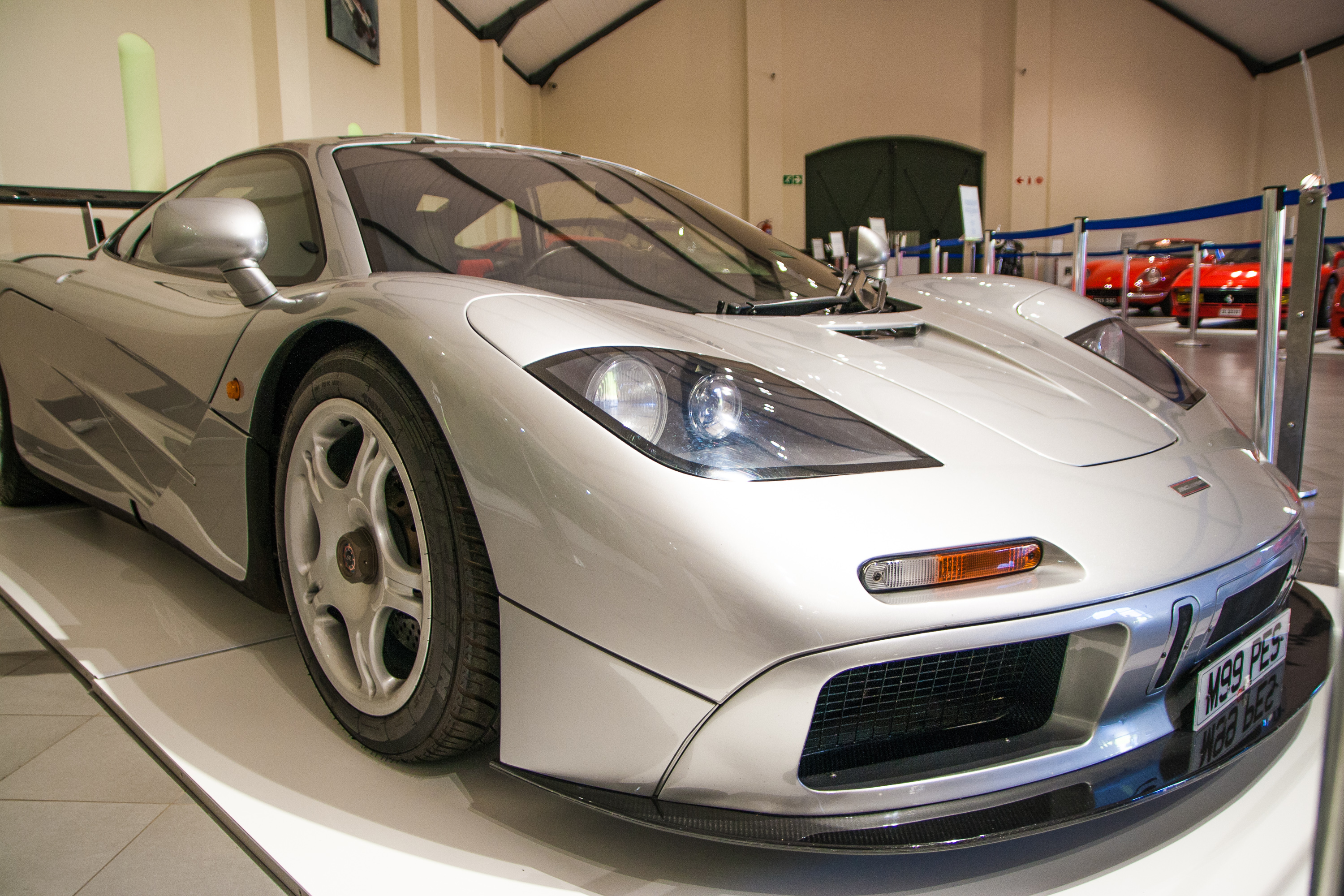
3. **1994 McLaren F1 LM**Alright, let’s clear the air: some purists might grumble about the 1994 McLaren F1 LM being on a list of “vintage” rides, given its relatively youthful age. But honestly, if a car can still make your jaw hit the floor and command nearly $20 million, it’s earned its spot among the legends, regardless of its birth year. This isn’t just a supercar; it’s *the* supercar, a benchmark against which all others are still measured, even three decades later. It’s a machine that utterly rewrote the rulebook.
Just consider the performance figures: 0 to 100 mph in a blinding 6.3 seconds, a quarter-mile straight dispatched in a mere 11.1 seconds, and a staggering top speed exceeding 230 mph. These are numbers that still send shivers down the spine. Only 64 F1s were built between 1994 and 1997, making them incredibly rare, but the LM models are on another level entirely. The LM, a limited-edition model, was created specifically to celebrate the F1’s outright victory at the brutal 1995 Le Mans 24-hour race, an achievement that cemented its place in motorsport folklore.
Under the carbon-fiber skin lies a monumental 6.0-liter V-12 engine, a masterpiece of engineering that unleashes a colossal 627 horsepower. It’s a pure, unadulterated driving experience, unfiltered and utterly exhilarating. The F1 LM that fetched the highest price at auction, chassis No. 018, sold for an eye-watering $19.805 million in August of 2019. This isn’t just a car; it’s a monument to Gordon Murray’s genius, a celebration of raw, uncompromised performance, and a future classic that is already firmly entrenched in the pantheon of automotive greatness.
Car Model Information: 2019 Land Rover Range Rover Sport HSE
Name: McLaren F1
Caption: McLaren F1 chassis #063, built in 1997
Manufacturer: McLaren Automotive
Production: 1992–1998
Assembly: Woking,Surrey,England
Designer: Gordon Murray,Peter Stevens (car designer),Paul Rosche
Class: Sports car
BodyStyle: coupé
Powerout: 461 kW
Abbr: on kerb
Doors: Butterfly doors
Related: unbulleted list
Layout: Rear mid-engine, rear-wheel-drive layout
Engine: 6064 cc
Order: BMW S70/2,V12 engine
Transmission: Manual transmission
Wheelbase: 2718 mm
Length: 4287 mm
Width: 1820 mm
Height: 1140 mm
Weight: 1140 kg
Successor: unbulleted list
Sp: uk
Predecessor: McLaren M6A
Categories: All Wikipedia articles written in British English, All articles with unsourced statements, Articles with short description, Articles with unsourced statements from May 2018, Articles with unsourced statements from October 2018
Summary: The McLaren F1 is a sports car that was the first type approved road-going sportscar manufactured by British Formula One team McLaren. It was the last road-legal, series-produced sportscar to win the 24 Hours of Le Mans race outright, as well as being recognised as the world’s fastest ‘production car’ when launched. The original concept, by leading technical designer Gordon Murray, convinced then head of McLaren Ron Dennis, to support McLaren leaping into manufacturing road-going sportscars. Car designer Peter Stevens was hired to do the car’s exterior and interior styling.
To manufacture the F1, McLaren Cars (now McLaren Automotive) was set up; and BMW was contracted to develop and make BMW S70/2 V12 engines, specifically and exclusively limited for use in the F1. The car had numerous proprietary designs and technologies. As one of the first sportscars with a fully carbon-fibre monocoque body and chassis structure, it is both lighter and more streamlined than many later competitors, despite the F1 having seats for three adults. An unconventional seating layout, with the driver’s seat front and centre, and two passenger seats (on the driver’s left and right), gives the driver improved visibility. Murray conceived the F1 as an exercise in creating ‘the ultimate road-going sportscar’, in the spirit of Bruce McLaren’s original plans for the M6 GT.
Production began in 1992 and ended in 1998; in all, 106 cars were manufactured, with some variations in the design. Although not originally designed as a race car, modified racing versions of the car won several races, including the 1995 24 Hours of Le Mans.
On 31 March 1998, the XP5 prototype with a modified rev limiter set the Guinness World Record for the world’s fastest production car, reaching 240.1 mph (386.4 km/h), surpassing the Jaguar XJ220’s 217.1 mph (349.4 km/h) record from 1992 achieved with an increased rev limit and catalytic converters removed.
Get more information about: McLaren F1
Buying a high-performing used car >>>
Brand: McLaren Model: F1 LM
Price: $27,967 Mileage: 77,935 mi.
Read more about: Gear Up for Glory: 15 Unforgettable Rides That Defined the Legendary 1970s Automotive Scene

4. **1961 Ferrari 250 GT SWB California Spider**Now, here’s a story straight out of a Hollywood script: a stunning 1961 Ferrari 250 GT SWB California Spider, found tucked away in a barn, belonging to none other than French movie star Alain Delon. Imagine the moment of discovery, brushing away decades of dust to reveal this automotive masterpiece, hidden from the world but retaining every ounce of its breathtaking beauty. It’s a tale that adds layers of mystique and romance to an already legendary machine.
This isn’t just any 250 GT; it’s the most expensive 250 GT ever sold, fetching an astonishing 16,288,000 euros (approximately $19.85 million) at auction in 2015. Such a price tag isn’t just for a car; it’s for the narrative it carries, the history it embodies, and the sheer, unadulterated elegance of its Pininfarina-designed lines. Every curve, every detail, speaks of an era when grand touring was an art form, and Ferrari was its most exquisite brush.
Beneath that exquisite coachwork beats the heart of a true performer: a 3.0-liter V-12 engine, delivering a potent 277 horsepower and capable of reaching a top speed of 149 mph. Weighing in at 2,646 pounds, it offered a sublime balance of grace and power, perfect for cruising the scenic routes of California or the winding roads of the French Riviera. The legend of this barn find, combined with its movie star provenance and inherent beauty, makes it an irresistible siren call for collectors worldwide.
Car Model Information: 2020 Ford Mustang GT Premium
Name: Ferrari 250 GT , California Spyder
Caption: Ferrari 250 GT California Spyder SWB at the Goodwood Revival 2009.
Manufacturer: Ferrari
Production: 1957–1963,(106 produced)
Assembly: Modena
Designer: Sergio Scaglietti
Class: Sports car
BodyStyle: Roadster (automobile)
Layout: Longitudinal engine,Front-engine, rear-wheel-drive layout#Front mid-engine, rear-wheel-drive layout
Engine: Ferrari Colombo engine
Related: Ferrari 250 GT Berlinetta
Transmission: Manual transmission
Wheelbase: 2600 mm
Abbr: on (dry)
Weight: 1100 kg
Successor: Ferrari Daytona
Categories: 1950s cars, 1960s cars, Articles with short description, CS1 maint: others, Cars introduced in 1957
Summary: The Ferrari 250 GT California Spyder is a sports car developed by the Italian automotive company Ferrari. It is presented by the brand as Ferrari 250 Gran Turismo Spyder California or simply Ferrari 250 California. It was designed by Sergio Scaglietti, who adapted the styling of the 250 GT Pininfarina, and was produced by Carrozzeria Scaglietti. The model gained considerable recognition following its appearance in the 1986 film Ferris Bueller’s Day Off.
The 250 GT California Spyder is a convertible version of the contemporary Berlinetta. It is powered by the traditional Ferrari V12 engine and was produced in approximately 100 units, nearly equally split between long wheel-bases (LWB) versions from 1957 to 1960 and short wheelbase (SWB) versions from 1960 to 1963.
At auction French actor Alain Delon sold for nearly EUR 16.3 million in February 2015 Christies sold a rare variant for USD 25 million at 2025 Monterey Car Week.
Get more information about: Ferrari 250 GT California Spyder
Buying a high-performing used car >>>
Brand: Ferrari Model: 250 GT SWB California Spider
Price: $40,514 Mileage: 12,011 mi.
Read more about: Collectible Classics: Unveiling the Multi-Million Dollar Machines That Define Automotive Heritage
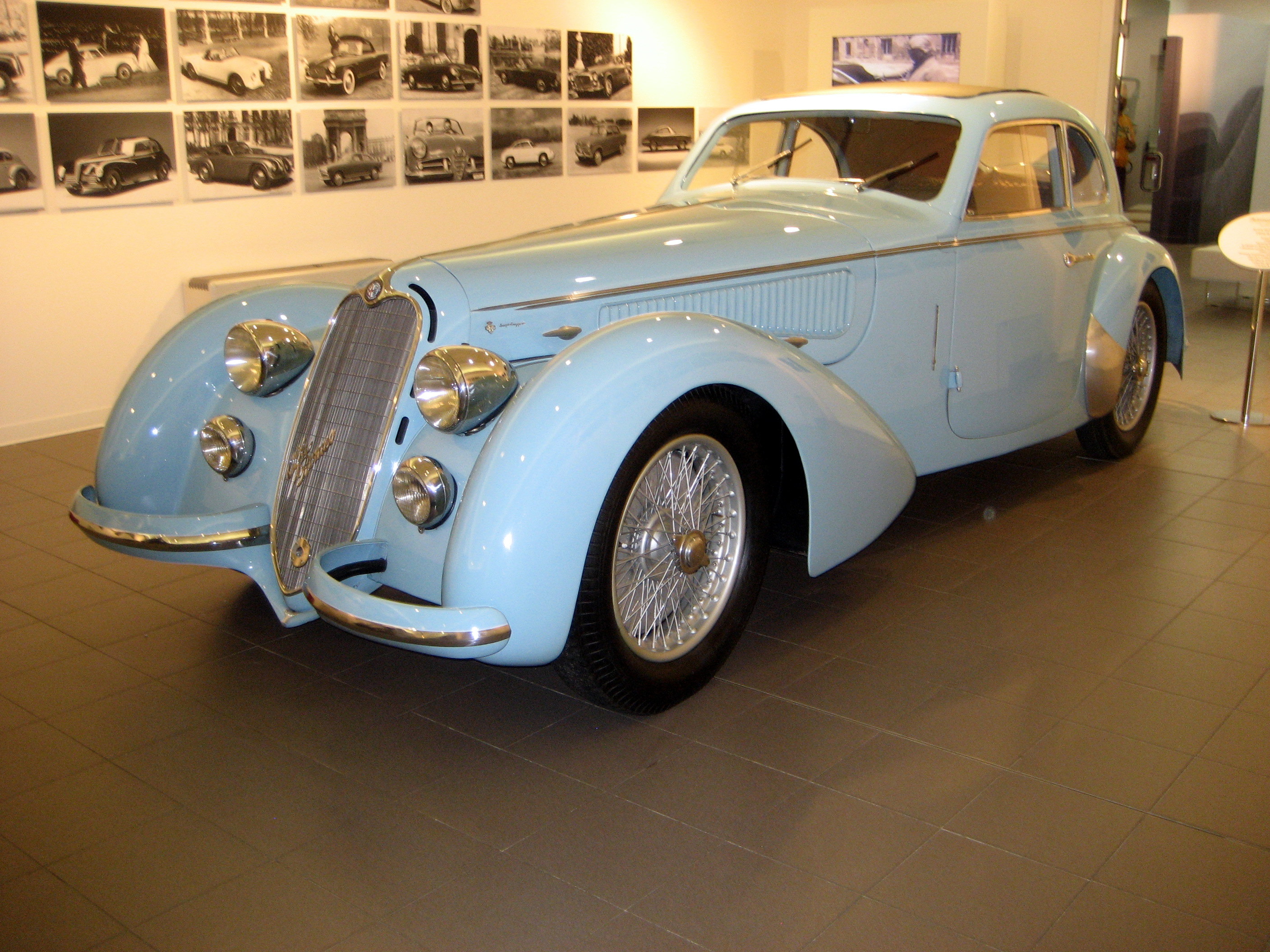
5. **1939 Alfa Romeo 8C 2900B Lungo Spider**Stepping further back in time, we arrive at a pre-war masterpiece that truly sets the standard for automotive elegance and engineering prowess: the 1939 Alfa Romeo 8C 2900B Lungo Spider. This isn’t just a car; it’s a rolling sculpture, a definitive statement from an era of unparalleled craftsmanship. Its design, steeped in art deco flourishes and aerodynamic genius, makes it instantly recognizable and endlessly captivating, even eighty years on.
This particular machine has a rather complicated history concerning its coachwork and engine, a fascinating narrative often found with bespoke vehicles from this period, adding to its mystique. Despite these intricacies, it remains one of the most striking examples of a classic sports car, a true thoroughbred from a golden age of motoring. Its presence alone commands attention, reflecting the meticulous detail and innovative spirit of its creators.
With only 12 extant Touring Spiders like this one, its rarity is a colossal factor in its astronomical value. This specific example fetched an incredible $19.8 million at a Sotheby’s auction in 2016. Under the hood, a magnificent 2.9-liter straight-8 engine, famously twin-supercharged, churned out 180 horsepower. While top speed figures are elusive from that era, the raw power and sophisticated engineering for the time were utterly groundbreaking, making it a formidable machine on both road and track. It truly is a testament to pre-war Italian mastery.
Car Model Information: 2019 Land Rover Range Rover Sport HSE
Caption: Custom Alfa Romeo 8C (1936)
Name: Alfa Romeo 8C
Manufacturer: Alfa Romeo
Production: 1931–1939
Assembly: Portello (district of Milan)
Class: Luxury car,Sports car,Racing car
Layout: FR layout
Engine: Straight-8
Designer: Vittorio Jano
Categories: 24 Hours of Le Mans race cars, Alfa Romeo sports racing cars, Alfa Romeo vehicles, Articles with short description, Cars introduced in 1931
Summary: The Alfa Romeo 8C was a range of Alfa Romeo road, race and sports cars of the 1930s.
The 8C designates 8 cylinders, and originally a straight 8-cylinder engine. The Vittorio Jano designed 8C was Alfa Romeo’s primary racing engine from its introduction in 1931 to its retirement in 1939. In addition to the two-seater sports cars it was used in the world’s first genuine single-seat Grand Prix racing car, the Monoposto ‘Tipo B’ – P3 from 1932 onwards. In its later development it powered such vehicles as the twin-engined 1935 6.3-litre Bimotore, the 1935 3.8-litre Monoposto 8C 35 Type C, and the Alfa Romeo 8C 2900B Mille Miglia Roadster. It also powered top-of-the-range coach-built production models, including a Touring Spider and Touring Berlinetta.
In 2004 Alfa Romeo revived the 8C name for a V8-engined concept car. This eventually made it into production in 2007, as the 8C Competizione.
Get more information about: Alfa Romeo 8C
Buying a high-performing used car >>>
Brand: Alfa Romeo Model: 8C 2900B Lungo Spider
Price: $27,967 Mileage: 77,935 mi.
Read more about: Beyond the Boomer Icons: Why Millennials Are Steering Clear of These Classic Cars and Reshaping the Collector Market
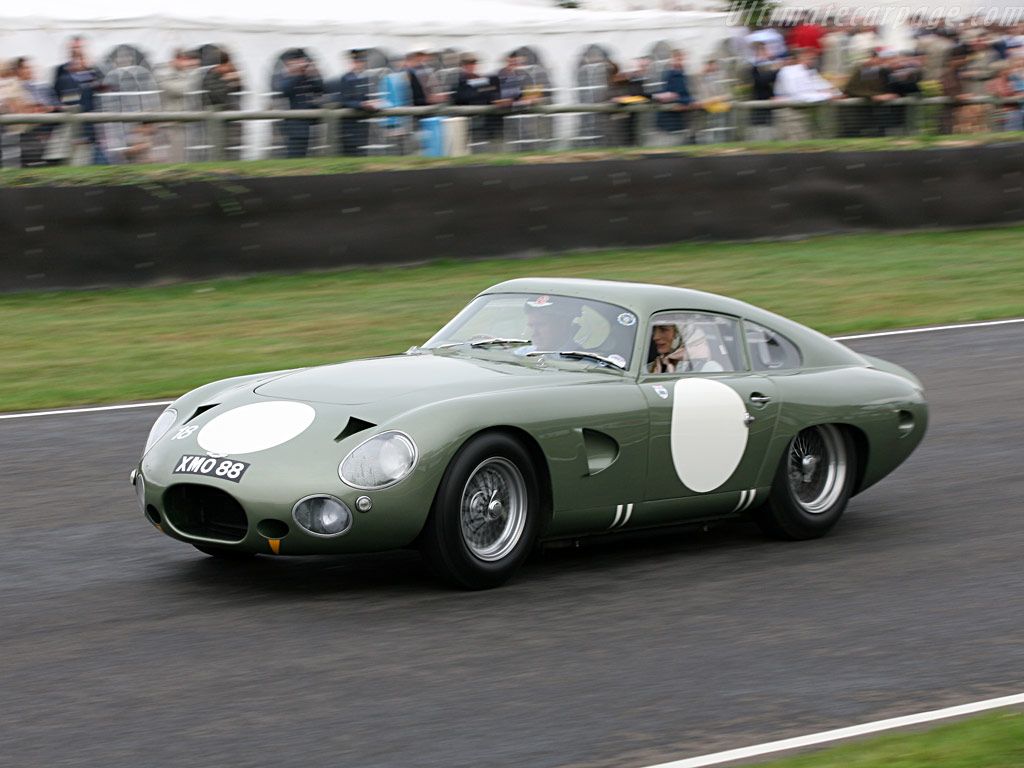
6. **1963 Aston Martin DP215**Ah, the 1963 Aston Martin DP215. A racing prototype, one of a kind, a machine of incredible beauty and audacious ambition. And yet, this particular car didn’t quite achieve the glory it was destined for on the track, famously suffering a gearbox breakdown after just four hours during the 1963 Le Mans. It’s a cruel twist of fate, isn’t it? A testament to the brutal, unforgiving nature of endurance racing, where even the most magnificent machines can falter.
But here’s the kicker: its failure on the track hasn’t dimmed its legendary status one bit. In fact, it has only intensified it. Why? Because this isn’t just any Aston Martin; it’s the *only* one of its kind, and crucially, it survived mostly intact. That makes it an irreplaceable piece of automotive history, a snapshot of Aston Martin’s audacious attempt to conquer Le Mans with radical, cutting-edge engineering. It’s a reminder that sometimes, the legend isn’t just in the victory, but in the sheer audacity of the attempt.
And what an attempt it was! Underneath its sleek, aerodynamic body, designed to cheat the wind, resided a potent 4.0-liter straight-6 engine, producing 326 horsepower. This powerhouse was capable of pushing the DP215 to a blistering top speed of 198.6 mph, all while weighing a svelte 2,219 pounds. This raw performance potential, combined with its unique status, led to it selling for an astonishing $21.455 million at a Sotheby’s auction in 2018. It’s a magnificent, albeit unlucky, beast that remains one of the world’s most sought-after cars.
Car Model Information: 2019 Land Rover Range Rover Sport HSE
CarName: Aston Martin DP215
Caption: The sole DP215 following restoration after two accidents during its lifetime
Category: 24 Hours of Le Mans#Cars,Sports car racing
Constructor: Aston Martin Lagonda Limited
Designer: Ted Cutting
Team: flagicon,David Brown Ltd.
Drivers: flagicon,Lucien Bianchi
Chassis: NACA duct
FrontSuspension: coil spring
RearSuspension: Fully independent wide based unequal length wishbones, double wishbone layout
Length: 14 ft
Abbr: on dry
Width: 5 ft
Height: 4 ft
Wheelbase: 7 ft
Track: 4 ft
EngineName: Aston Martin
Capacity: 3,996 cc
Configuration: Weber carburetor
EnginePosition: Front-engine, rear-wheel-drive layout
GearboxName: David Brown (entrepreneur)
Gears: 5-speed
Type: Manual transmission
Differential: David Brown 8.25″ spiral bevel
Weight: 2219 lb
Debut: 1963 24 Hours of Le Mans
Categories: All Wikipedia articles written in British English, All articles needing additional references, Articles needing additional references from August 2018, Articles with short description, Aston Martin racing cars
Summary: The Aston Martin DP215 is a prototype sports car built by Aston Martin for grand touring-style racing in 1963. It was built alongside the similar DP214, both of which replaced the previous DP212. Only a single example was built, which survives today.
Again using a DB4GT chassis, the DP215 was stylistically similar to the DP214, but had the advantage of not only being slightly lighter, but also using the larger 4.0-litre Tadek Marek Inline-6-cylinder engine which had previously powered DP212. Even though the car was also intended to carry the Tadek Marek designed 5-litre V8 engine, which later appeared in the Lola Aston T70 MkIII. Even so, with this increased power and decreased weight, the DP215 was seen as better suited to Le Mans’ Mulsannes straight than the DP214.
The DP215 was sold at RM Sotheby’s 2018 Monterey auction for $21,455,000 including buyer’s fee.
Get more information about: Aston Martin DP215
Buying a high-performing used car >>>
Brand: Aston Martin Model: DP215
Price: $27,967 Mileage: 77,935 mi.
Read more about: The 17 Most Expensive Classic Cars Ever Sold
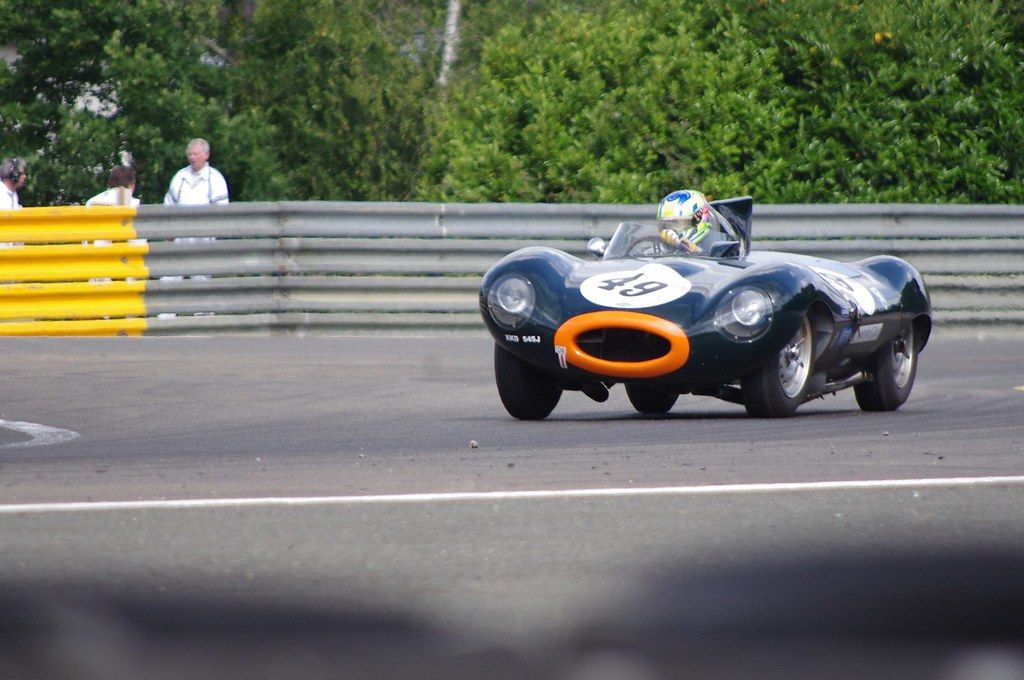
7. **1955 Jaguar D-Type**If you want to talk about sheer, unadulterated cool, then the 1955 Jaguar D-Type demands your attention. This isn’t just one of the coolest race cars ever made; it’s a visceral, awe-inspiring machine that screams speed and victory from every sensuously curved panel. Its distinctive, aerodynamic shape and formidable presence marked it as an icon the moment it hit the track, a testament to British ingenuity and a design that was truly ahead of its time.
And ‘blisteringly fast’ is an understatement. This D-Type, which ultimately sold at auction in 2016 for a staggering $21.78 million, was a formidable competitor. At the 1955 Le Mans, it averaged an incredible 104.47 mph, and on the legendary Mulsanne Straight, it hit an eye-watering 156.868 mph. These weren’t just respectable numbers for the era; they were utterly dominant, leaving rivals gasping in its wake. It’s the kind of performance that car enthusiasts still dream of experiencing.
But the D-Type’s greatest hour, its moment of ultimate glory, arrived during the 1957 Le Mans. In an absolutely crushing display of dominance, D-Types took not just first, but second, third, fourth, and even sixth spots in the 55-car race. Think about that for a second – almost a clean sweep! Powering this extraordinary achievement was a 3.4-liter straight-six engine, delivering 250 horsepower to a lightweight 2,090-pound chassis. It was a symphony of power, aerodynamics, and driver skill that solidified the D-Type’s place as an undisputed legend. There’s no questioning why it’s so coveted.”
, “_words_section1”: “1966
Having explored the magnificent machines that kicked off our journey into the ‘Gold Standard’ of vintage rides, it’s time to buckle up once more. We’re about to delve into the remaining eight legends, each a marvel of engineering and design, carrying a story as rich as its polished chrome. These are the cars whose iconic status, groundbreaking innovations, and captivating histories have sent their values skyrocketing, cementing their place as enduring legends in the automotive pantheon.
From pre-war opulence to dominant racing prototypes, these vehicles aren’t just investments; they are cultural touchstones, embodiments of passion and peak performance. Prepare to be inspired by the sheer audacity of their creators and the incredible tales they tell. This is where the past truly defines the future of automotive desire, and where millions change hands for a piece of motoring immortality.
Car Model Information: 2017 Jaguar F-PACE 20d Prestige
Caption: Retromobile
Name: Jaguar D-Type
Designer: Malcolm Sayer
Manufacturer: Jaguar Cars
Production: 1954–1957
Assembly: Coventry
Class: Sports racing car
BodyStyle: Roadster (automobile)
Layout: Front-engine, rear-wheel-drive layout
Engine: cvt,Jaguar XK6 engine
Predecessor: Jaguar C-Type
Successor: Jaguar E-Type#Lightweight E-Type (1963–64, 2014–present)
Related: Jaguar XKSS
Categories: 24 Hours of Le Mans race cars, All Wikipedia articles written in British English, All articles needing additional references, All articles with unsourced statements, Articles needing additional references from April 2010
Summary: The Jaguar D-Type is a sports racing car that was produced by Jaguar Cars Ltd. between 1954 and 1957. Designed specifically to win the Le Mans 24-hour race, it shared the straight-6 XK engine and many mechanical components with its C-Type predecessor. Its structure, however, was radically different, with innovative monocoque construction and slippery aerodynamics that integrated aviation technology, including in some examples a distinctive vertical stabilizer.
Engine displacement began at 3.4 litres, was enlarged to 3.8 L in 1957, and reduced to 3.0 L in 1958 when Le Mans rules limited engines for sports racing cars to that maximum. D-Types won Le Mans in 1955, 1956 and 1957. After Jaguar temporarily retired from racing as a factory team, the company offered the remaining unfinished D-Types as street-legal XKSS versions, whose perfunctory road-going equipment made them eligible for production sports car races in America. In 1957 25 of these cars were in various stages of completion when a factory fire destroyed nine of them.
Total production is thought by some to have totaled 71 D-Types, including 18 for factory teams and 53 for privateers (plus an additional 16 D-Types were converted into road-legal XKSS versions). Jaguar is quoted as claiming it built 75 D-Types.
Get more information about: Jaguar D-Type
Buying a high-performing used car >>>
Brand: Jaguar Model: D-Type
Price: $15,900 Mileage: 78,266 mi.
Read more about: Rolling Time Capsules: Why These 6 Vintage Cars Still Outshine Modern Vehicles
8. **1935 Duesenberg SSJ**Ah, the 1935 Duesenberg SSJ. Just uttering the name conjures images of pre-Depression era luxury, an American beast of unparalleled prestige. This particular SSJ, which astonishingly fetched $22 million at auction in 2018, once belonged to the legendary actor Gary Cooper. His ownership undoubtedly added a certain cinematic sparkle, a zero or two to its value, elevating its status from mere machine to a piece of Hollywood history.
But let’s be clear, this Duesenberg is far more than celebrity provenance. It’s a bona fide ‘road monster,’ a testament to American engineering when excess was celebrated. Its substantial 5,000-pound frame, far from being a burden, barely contained a truly massive straight-eight engine. This supercharged SSJ model could unleash an incredible 400 horsepower, pushing the gargantuan machine from 0 to 60 mph in less than eight seconds—a staggering feat for its era.
Such performance, combined with its audacious styling and inherent luxury, makes the Duesenberg SSJ an automotive icon. It truly epitomizes a period when cars were crafted with an uncompromising vision of grandeur and power. To own one is to possess a tangible link to an opulent past, a statement of pure, unadulterated automotive might that remains breathtakingly valuable today.
Read more about: Collectible Classics: Unveiling the Multi-Million Dollar Machines That Define Automotive Heritage
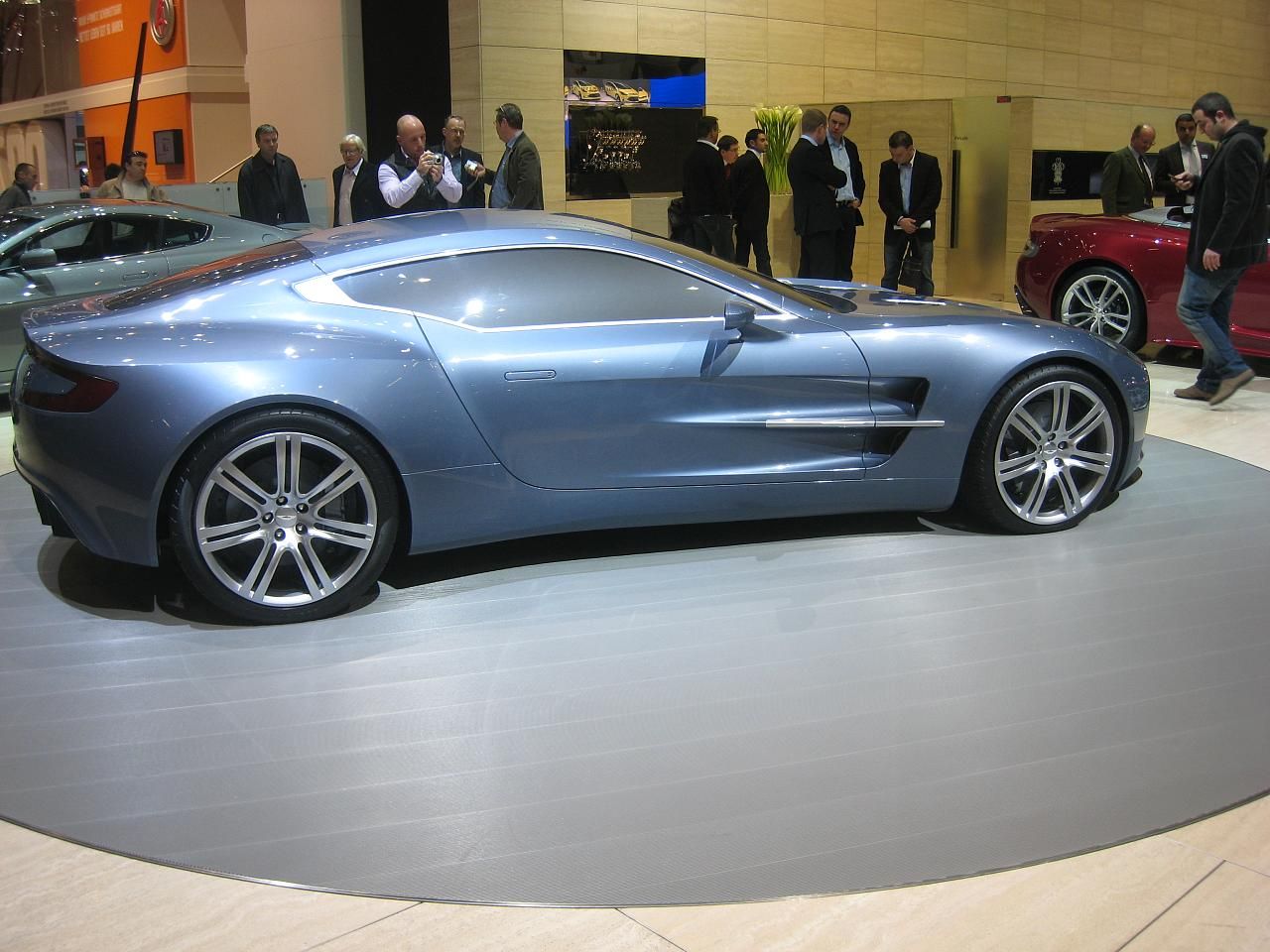
9. **Aston Martin DBR1**Every racing legend has a genesis, a dream that ignites its creation. For British entrepreneur and engineer David Brown, that dream was to conquer Le Mans. He acquired the fledgling Aston Martin company in 1946, and just over a decade later, his relentless pursuit bore fruit with the Aston Martin DBR1. This glorious machine finally brought him that coveted Le Mans victory in 1959, fulfilling a decade-long ambition.
While the exact DBR1 that commanded a record-setting $22.5 million at auction in 2017 wasn’t the very car that won Le Mans, it holds an equally significant place in history. It was the very first of only five DBR1s ever made, the genesis of a legendary racing line. Furthermore, this specific chassis wasn’t a stranger to victory lane, having clinched a win at the challenging 1959 Nürburgring, proving its formidable pedigree on the global stage.
Underneath that impeccably sleek, race-honed bodywork, this British masterpiece housed a potent 2.9-liter V-6 engine, capable of producing a thrilling 301 horsepower. Weighing a mere 1,765 pounds, the DBR1 was a precision instrument, designed for speed and endurance. Its remarkable combination of rarity, racing success, and the powerful story of a dream realized makes it one of the most historically significant and valuable cars in existence.
Car Model Information: 2020 BMW X3 xDrive30i
CarName: Aston Martin DBR1
Caption: Aston Martin DBR1/5 at Silverstone Classic 2007
Category: 24 Hours of Le Mans#Cars,Sports car racing
Constructor: Aston Martin Lagonda Limited
Designer: Ted Cutting
Team: flagicon,Border Reivers (racing team)
Drivers: flagicon,Reg Parnell
Chassis: space frame
FrontSuspension: Torsion bar suspension
RearSuspension: De Dion tube
Length: 13 ft
Abbr: on
Width: 5 ft
Height: 3 ft
Wheelbase: 7 ft
Track: 4 ft
EngineName: Aston Martin
Power: Convert
Capacity: 2,493 cc / 2,992 cc,
Configuration: Straight six,
EnginePosition: Front-engine, rear-wheel drive layout
GearboxName: David Brown CG537
Gears: 5-speed
Type: Manual transmission
Weight: 1765 lb
Tyres: Avon Tyres#Avon Rubber plc
Debut: 1956 24 Hours of Le Mans
Races: 18,Inc 4 Le Mans
Wins: 9,Inc 1959 Le Mans
ConsChamp: 1 (1959)
Categories: 24 Hours of Le Mans race cars, All Wikipedia articles written in British English, Articles with hAudio microformats, Articles with short description, Aston Martin racing cars
Summary: The Aston Martin DBR1 is a sports racing car built by Aston Martin starting in 1956, intended for the World Sportscar Championship as well as non-championship sportscar races at the time. It is most famous as the victor of the 1959 24 Hours of Le Mans, Aston Martin’s only outright victory at the endurance classic. It is one of only three cars in the 1950s to win both the World Sports Car Championship and Le Mans 24 Hours in the same year (the others being the Ferrari 375 Plus in 1954 and the Ferrari 250TR in 1958). In addition the six World Sports Car Championship victories was a record for any car in the 1950s and remained a record in the championship until surpassed by the Ferrari 250TR. The three consecutive triumphs in 1959 at the Nürburgring, Le Mans and the Tourist Trophy equalled the record set by the Ferrari 250TR with its three consecutive victories at the start of the 1958 season.
In August 2017, car DBR1/1 was sold for a world record price for a British-made car of US$22,555,000.
Get more information about: Aston Martin DBR1
Buying a high-performing used car >>>
Brand: Aston Martin Model: DBR1
Price: $26,485 Mileage: 40,004 mi.
Read more about: Collectible Classics: Unveiling the Multi-Million Dollar Machines That Define Automotive Heritage

10. **1964 Ferrari 275 GTB/C Speciale**When you talk about Ferrari legends, the shadow of the 250 GTO looms large. Yet, in 1964, Ferrari’s brilliant engineer Mauro Forghieri set out to craft its successor: the 275 GTB Competizione Speciale. These were not mere road cars; only three were conceived, purpose-built with a singular focus on dominating the track, specifically for the grueling 1965 Le Mans endurance race. They were designed to carry the torch of Maranello’s racing supremacy.
What set these machines apart was their radical approach to weight saving. Each of the three 275 GTB/C variations featured a super-lightweight aluminum bodywork, meticulously crafted to shave off every possible ounce. This dedication to lightness was paired with a robust chassis, creating a formidable package designed to outmaneuver and outpace the competition on the world’s most demanding circuits. It was a pure racing thoroughbred, stripped of all unnecessary frills.
Propelling this lightweight marvel was a 3.3-liter V-12 engine, delivering a potent 230 horsepower, and capable of a top speed of 160 mph. These figures, combined with its extreme rarity and direct lineage to Ferrari’s most celebrated racers, ensured its astronomical value. Indeed, one of these magnificent 275 GTB/C Speciale models fetched an astonishing $28.7 million, a testament to its unparalleled pedigree and the unyielding desire of collectors to own such a pivotal piece of Ferrari history.
Car Model Information: 2020 BMW X3 xDrive30i
Name: Ferrari 275,GTB, GTS, GTB/4, NART Spider
Caption: 1966 Ferrari 275 GTB Series II
Manufacturer: Ferrari
Class: Grand tourer
BodyStyle: unbulleted list
Production: unbulleted list
Wheelbase: 2400 mm
Abbr: on (alloy-bodied 275 GTB/C)
Weight: unbulleted list
Predecessor: Ferrari 250
Successor: unbulleted list
Layout: Front-engine, rear-wheel-drive layout
Engine: unbulleted list
Transmission: transaxle
Designer: unbulleted list
Categories: All Wikipedia articles written in British English, All articles with dead external links, All articles with unsourced statements, Articles with dead external links from April 2024, Articles with permanently dead external links
Summary: The Ferrari 275 is a series of front-engined V12-powered grand touring automobiles with two-seater coupé and spider bodies produced by Ferrari between 1964 and 1968. The first 275 series cars were powered by a 3.3 L (3286 cc) overhead camshaft Colombo 60° V12 engine producing 260–320 hp (190–240 kW). An updated 275 GTB/4 was introduced in 1966, with a revised four overhead camshaft engine producing 300 hp (220 kW). The 275 series were the first road-going Ferraris equipped with a transaxle and independent rear suspension.
Pininfarina designed the 275 coupé and spider bodies, while Scaglietti designed the 275 GTS/4 NART Spyder, of which only 10 were made.
Motor Trend Classic named the 275 GTB coupé/GTS spider as number three in their list of the ten “Greatest Ferraris of all time”, and the 275 GTB/4 was named number seven on Sports Car International’s 2004 list of Top Sports Cars of the 1960s. In a September 1967 road test, Road & Track described the NART Spyder as “the most satisfying sports car in the world.”
Get more information about: Ferrari 275
Buying a high-performing used car >>>
Brand: Ferrari Model: 275 GTB/C Speciale
Price: $26,485 Mileage: 40,004 mi.
Read more about: Collectible Classics: Unveiling the Multi-Million Dollar Machines That Define Automotive Heritage
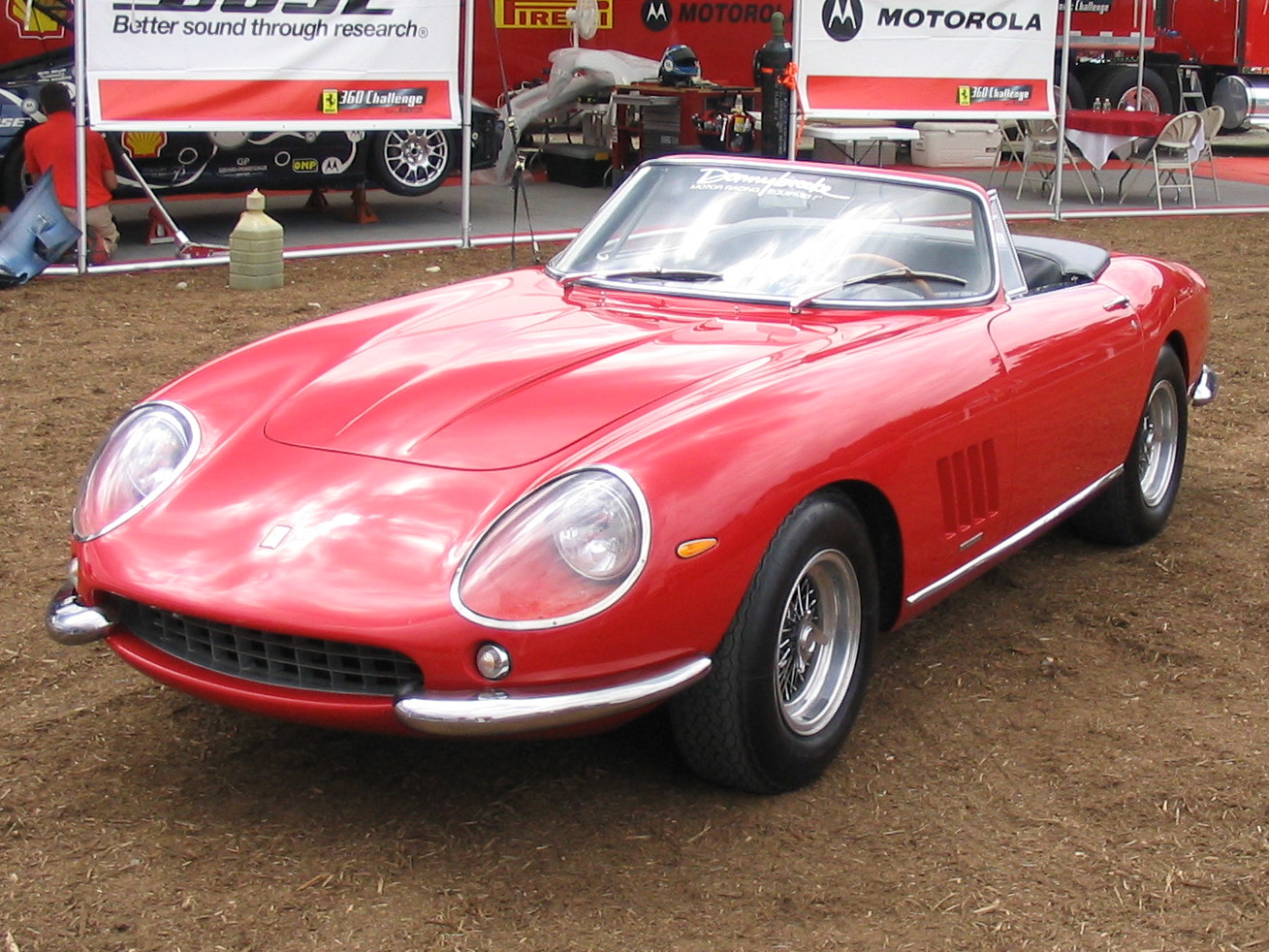
11. **1967 Ferrari 275 GTB/4S NART Spider**Picture this: a car so exquisitely rare, so captivatingly beautiful, that it transcends mere automotive status. The 1967 Ferrari 275 GTB/4S NART Spider is precisely that machine. Originally, only 25 were planned for production, but a curious twist of fate—a perceived ‘lack of demand’ at the time—meant a mere ten ever saw the light of day. This scarcity, now, is a monumental factor in its legendary status and staggering value.
One of these ten, a truly unique example, found its way into the hands of Eddie Smith Sr. in 1968. He recognized its unparalleled cool factor immediately and held onto it fiercely, even famously refusing to sell it to Hollywood icon Steve McQueen after the actor regrettably crashed his own NART Spider. This story adds yet another layer of romance and intrigue to an already irresistible car, a true testament to its enduring allure.
Powered by a glorious 3.3-liter V-12 engine, churning out a respectable 300 horsepower and capable of reaching 166.5 mph, this wasn’t just a pretty face. It was a serious performer. When Eddie Smith Jr. eventually put his father’s cherished car up for auction in 2013, it fetched a jaw-dropping $25 million ($27.5 million including fees), with the proceeds generously donated to charity. This blend of rarity, movie star appeal, and a philanthropic legacy makes the NART Spider an automotive treasure beyond compare.
Car Model Information: 2020 BMW X3 xDrive30i
Name: Ferrari 275,GTB, GTS, GTB/4, NART Spider
Caption: 1966 Ferrari 275 GTB Series II
Manufacturer: Ferrari
Class: Grand tourer
BodyStyle: unbulleted list
Production: unbulleted list
Wheelbase: 2400 mm
Abbr: on (alloy-bodied 275 GTB/C)
Weight: unbulleted list
Predecessor: Ferrari 250
Successor: unbulleted list
Layout: Front-engine, rear-wheel-drive layout
Engine: unbulleted list
Transmission: transaxle
Designer: unbulleted list
Categories: All Wikipedia articles written in British English, All articles with dead external links, All articles with unsourced statements, Articles with dead external links from April 2024, Articles with permanently dead external links
Summary: The Ferrari 275 is a series of front-engined V12-powered grand touring automobiles with two-seater coupé and spider bodies produced by Ferrari between 1964 and 1968. The first 275 series cars were powered by a 3.3 L (3286 cc) overhead camshaft Colombo 60° V12 engine producing 260–320 hp (190–240 kW). An updated 275 GTB/4 was introduced in 1966, with a revised four overhead camshaft engine producing 300 hp (220 kW). The 275 series were the first road-going Ferraris equipped with a transaxle and independent rear suspension.
Pininfarina designed the 275 coupé and spider bodies, while Scaglietti designed the 275 GTS/4 NART Spyder, of which only 10 were made.
Motor Trend Classic named the 275 GTB coupé/GTS spider as number three in their list of the ten “Greatest Ferraris of all time”, and the 275 GTB/4 was named number seven on Sports Car International’s 2004 list of Top Sports Cars of the 1960s. In a September 1967 road test, Road & Track described the NART Spyder as “the most satisfying sports car in the world.”
Get more information about: Ferrari 275
Buying a high-performing used car >>>
Brand: Ferrari Model: 275 GTB/4S NART Spider
Price: $26,485 Mileage: 40,004 mi.
Read more about: Beyond the Mid-Engine Myth: 14 Front-Engined Ferraris That Command the Road
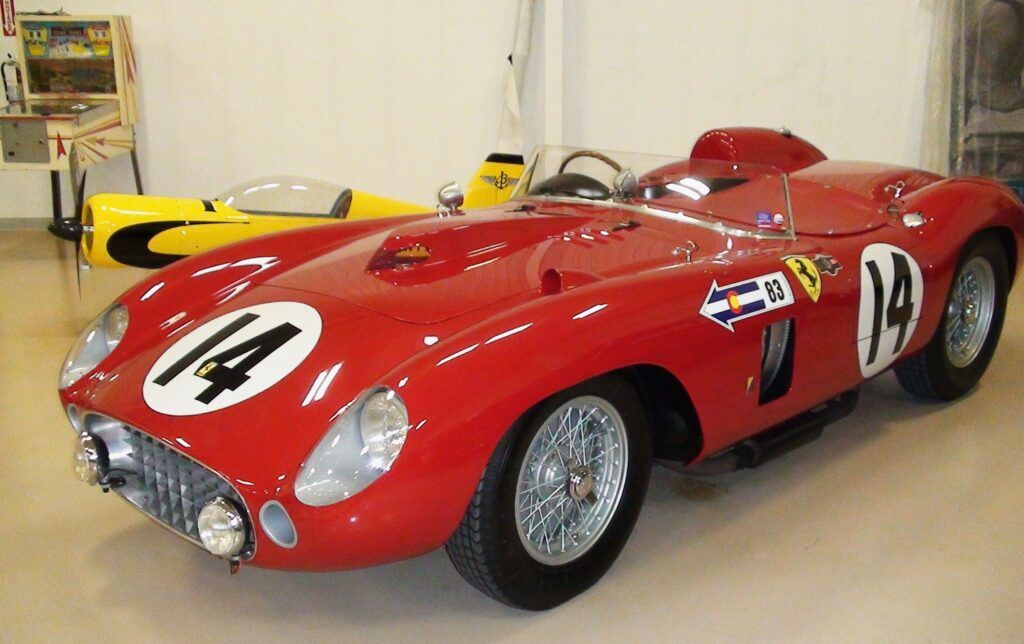
12. **1956 Ferrari 290 MM**For those who understand Ferrari’s racing heritage, the “MM” in 290 MM speaks volumes. It stands for Mille Miglia, the legendary Italian open-road endurance race, for which this magnificent machine was specifically designed. And conquer it did, claiming victory in 1956, marking its place in the annals of motorsport history with an emphatic roar from its powerful engine. It was a champion, born for the crucible of competition.
But its racing prowess is only part of the story. The 1956 Ferrari 290 MM exists in an almost mythical realm of rarity. Only four of these incredible vehicles were ever crafted, and astonishingly, three of them still survive today. Such extreme scarcity fuels the passions of collectors worldwide, turning every appearance at auction into a truly seismic event. When Sotheby’s presented one for sale in 2015, it was snapped up for an astounding $28 million, a figure that solidifies its elite status.
Under the hood, a beast of a 3.5-liter V-12 engine pulsed with 320 horsepower, propelling this lightweight machine to a thrilling top speed of 170 mph. It was a symphony of speed, precision, and raw power. Another 290 MM subsequently sold for $22 million in 2018, further cementing its position as one of the most coveted and valuable racing cars ever built, a direct link to Ferrari’s golden age of dominance.
Car Model Information: 2020 BMW X3 xDrive30i
Name: Ferrari 290 MM
Manufacturer: Ferrari
Production: 1956,4 produced (one converted from 860 Monza)
Designer: Carrozzeria Scaglietti
BodyStyle: Roadster (automobile)
Layout: Mid-engine design#FMR layout – Front Mid-engine / Rear-wheel drive
Engine: 3490 cc
Abbr: on (dry)
Powerout: cvt
Transmission: Manual transmission
Wheelbase: 2350 mm
Weight: 880 kg
Predecessor: Ferrari 410 S,Ferrari 860 Monza
Successor: Ferrari 290 S
Categories: All stub articles, Articles with short description, Classic post-war auto stubs, Commons category link is on Wikidata, Ferrari vehicles
Summary: The Ferrari 290 MM is a sports racing car produced by the Italian automobile manufacturer Ferrari in 1956. It was developed to compete in the 1956 edition of Mille Miglia as a successor to the 860 Monza, hence the acronym “MM”, and four cars were built.
Get more information about: Ferrari 290 MM
Buying a high-performing used car >>>
Brand: Ferrari Model: 290 MM
Price: $26,485 Mileage: 40,004 mi.
Read more about: Collectible Classics: Unveiling the Multi-Million Dollar Machines That Define Automotive Heritage
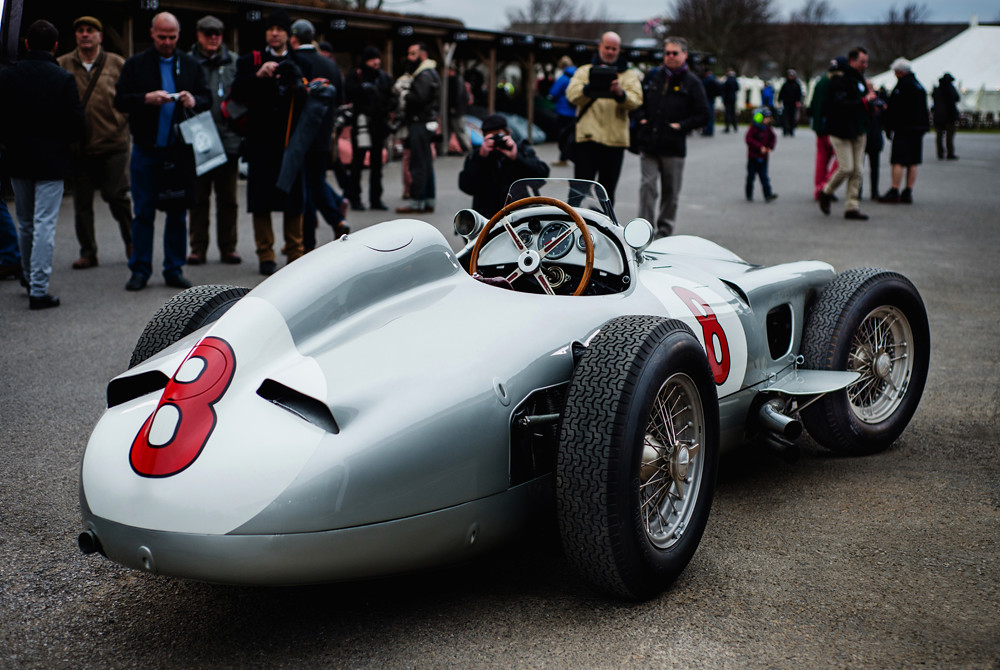
13. **1954 Mercedes-Benz W196**In the fiercely competitive world of Formula One, few cars have made an entrance as dramatic as the 1954 Mercedes-Benz W196. This was the car that single-handedly reinstituted Mercedes-Benz into a racing world then dominated by Ferrari and Maserati. It wasn’t just competitive; it was utterly dominant, sweeping two World Championship races back-to-back in 1954 and 1955, showcasing German engineering at its most formidable and precise.
Yet, its reign, though brilliant, was tragically short-lived. The W196 is inextricably linked to one of motorsport’s darkest days: the 1955 24 Hours Le Mans. In a horrific accident, Pierre Levegh’s W196 crashed, sending debris, including its massive 450-pound engine block, flying into the stands. The devastating outcome—83 spectators killed—led Mercedes-Benz to withdraw from competitive racing for an astonishing 29 years, a profound and lasting impact on the sport.
Despite this somber chapter, the W196’s historical significance is undeniable. Its engineering prowess and brief, glorious period of domination make it a monumental piece of automotive history. This legendary car, a symbol of both triumph and tragedy, sold at Bonhams for a staggering $29.6 million in 2013, a testament to its enduring legacy and the profound mark it left on motorsport.
Read more about: Collectible Classics: Unveiling the Multi-Million Dollar Machines That Define Automotive Heritage
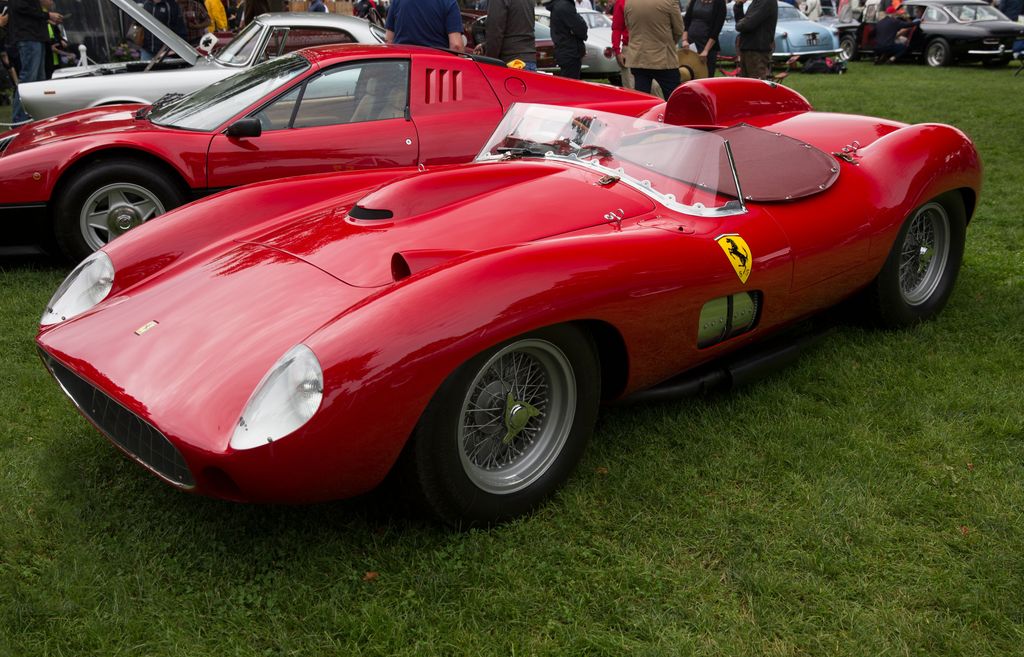
14. **1957 Ferrari 335 S Spider**The 1957 Ferrari 335 S Spider is a car of paradoxical reputation – a formidable racing machine that achieved a commendable second place in the 1957 Mille Miglia, yet one whose name is tragically tarnished by a devastating event. It’s a vivid reminder of the brutal dangers that once accompanied the exhilarating world of endurance racing, a stark contrast between glory and profound sorrow.
During that very Mille Miglia, another 335 S suffered a catastrophic tire explosion. The race car careened off the road, tragically claiming the lives of 10 spectators, including five children. The driver, Alfonso de Portago, and his navigator also perished in the horrific crash. It was a moment that sent shockwaves through the racing world, altering the course of motorsport safety regulations forever and leaving an indelible scar on the car’s legacy.
Despite the immense tragedy associated with it, or perhaps partly because of the intense history, the 335 S Spider remains a monumentally rare and sought-after machine. With only four of these cars ever built, its extreme scarcity contributes significantly to its stratospheric price tag. One example commanded $38.3 million at auction, a testament to its raw power, its place in racing history, and the collectors’ desire to own such a poignant and powerful piece of automotive artistry.
Car Model Information: 2020 BMW X3 xDrive30i
Name: Ferrari 335 S
Manufacturer: Ferrari
Aka: Ferrari 335 Sport
Production: 1957–1958,4 made (two converted from 315 S chassis)
Designer: Carrozzeria Scaglietti
Class: sports racing car
BodyStyle: Roadster (automobile)
Layout: Mid-engine design#FMR layout – Front Mid-engine / Rear-wheel drive
Engine: Ferrari Jano engine,V12 engine
Powerout: cvt
Transmission: Manual transmission
Wheelbase: 2350 mm
Abbr: on (dry)
Related: Ferrari 290 MM
Weight: 880 kg
Predecessor: Ferrari 315 S
Successor: Ferrari 250 TR
Categories: 24 Hours of Le Mans race cars, Articles with short description, Commons category link is on Wikidata, Ferrari vehicles, Mille Miglia
Summary: The Ferrari 335 S was a sports racing car produced by Italian automobile manufacturer Ferrari between 1957 and 1958. The car was a direct response to the Maserati 450S which with its 4.5-litre engine was threatening to overpower the 3.8-litre 315 S and 3.5-litre 290 MM. Four cars were produced in total.
Get more information about: Ferrari 335 S
Buying a high-performing used car >>>
Brand: Ferrari Model: 335 S Spider
Price: $26,485 Mileage: 40,004 mi.
Read more about: Collectible Classics: Unveiling the Multi-Million Dollar Machines That Define Automotive Heritage
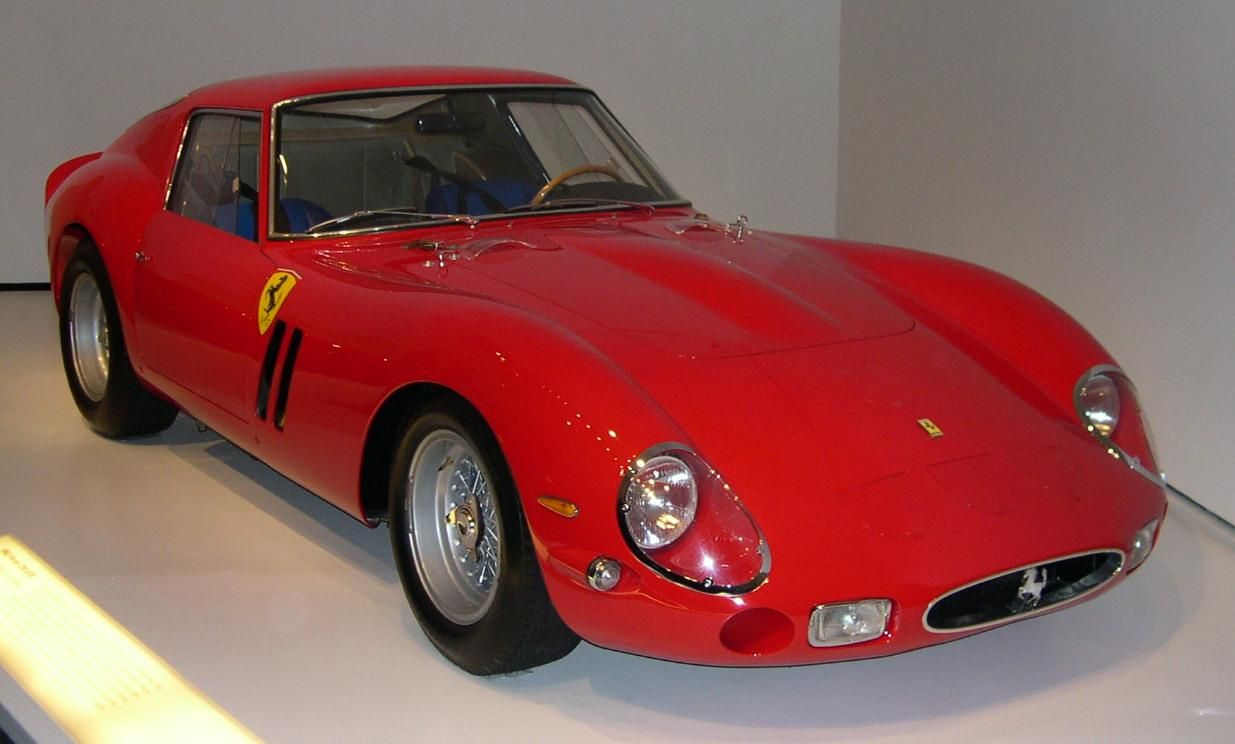
15. **1962 Ferrari GTO**And now, we arrive at the absolute pinnacle, the undeniable king, the ‘holy grail’ of car collectors: the 1962 Ferrari 250 GTO. If ever there was a car that defined automotive aspiration, this is it. Only 36 were ever built, making each example an almost mythological artifact, worth more than some entire city blocks, let alone mere megamansions. Its rarity isn’t just a factor; it’s a foundational pillar of its legendary status.
This particular 1962 GTO made history by smashing all previous car auction sales records, selling for an incredible $48.405 million in 2018. That’s a cool $10 million more than the previous record holder, also a GTO, which sold in 2014. Driven to victory by Edoardo Lualdi-Gabardi in the 1962 Italian GT Championship, this specific car is also one of only seven to feature the iconic Series II coachwork, adding another layer of desirability and historical importance.
But even this monumental sum isn’t the highest a GTO has ever commanded. A silver 1963 GTO, which famously won the 1964 Tour de France, sold for an estimated $70 million in a private sale in 2018. This simply reinforces the almost unimaginable value and enduring allure of the Ferrari 250 GTO. It isn’t just a car; it’s a profound statement of engineering genius, racing dominance, and artistic perfection, representing the ultimate dream for any true automotive connoisseur.
What a journey it’s been, hasn’t it? From the groundbreaking performance of pre-war marvels to the heart-stopping dominance of track-conquering Ferraris, these 15 machines are more than just cars. They are tangible echoes of automotive greatness, whispers of legendary drives, and screams of engines pushed to their absolute limits. Each one is a testament to an era when passion, innovation, and sheer audacity converged to create something truly extraordinary.
Car Model Information: 2020 BMW X3 xDrive30i
Name: Ferrari 250 GTO
Caption: 1963 Ferrari 250 GTO (chassis 4153GT)
Manufacturer: Ferrari
Production: 1962–1964,(36 produced)
Designer: Giotto Bizzarrini,Scaglietti
Class: Sports car
BodyStyle: berlinetta
Related: Ferrari 330#330 LMB,Ferrari P#250 LM
Layout: FR layout
Engine: 2,953 cc,Ferrari Colombo engine#250,Overhead camshaft#Single Overhead camshatf,Weber carburetor,Compression ratio
Powerout: 300 PS
Abbr: on
Order: flip @ 5500 rpm
Transmission: Manual transmission
Wheelbase: 2400 mm
Length: 4325 mm
Width: 1600 mm
Height: 1210 mm
Weight: convert
Predecessor: Ferrari 250 GT SWB
Successor: Ferrari 250 LM,Ferrari 288 GTO
Categories: All articles lacking reliable references, All articles needing additional references, All articles with bare URLs for citations, All articles with unsourced statements, Articles lacking reliable references from March 2022
Summary: The Ferrari 250 GTO is a grand tourer produced by Ferrari from 1962 to 1964 for homologation into the FIA’s Group 3 Grand Touring Car category. It was powered by Ferrari’s Tipo 168/62 Colombo V12 engine. The “250” in its name denotes the displacement in cubic centimeters of each of its cylinders; “GTO” stands for Gran Turismo Omologato, Italian for “Grand Touring Homologated”.
Just 36 of the 250 GTOs were manufactured between 1962 and 1964. This includes 33 cars with 1962–63 bodywork (Series I) and three with 1964 (Series II) bodywork similar to the Ferrari 250 LM. Four of the older 1962–1963 (Series I) cars were updated in 1964 with Series II bodies.
When new, the 250 GTO cost $18,000 in the United States, with buyers personally approved by Enzo Ferrari and his dealer for North America, Luigi Chinetti. This model has since become highly desired by automobile collectors and sales have repeatedly set price records. The current record for world’s most expensive Ferrari was set in June 2018 when a 1963 250 GTO (chassis 4153GT) was sold in a private sale for $70 million.
In 2004, Sports Car International placed the 250 GTO eighth on their list of Top Sports Cars of the 1960s, and nominated it the top sports car of all time. Similarly, Motor Trend Classic placed the 250 GTO first on a list of the “Greatest Ferraris of All Time”. Popular Mechanics named it the “Hottest Car of All Time”.
Get more information about: Ferrari 250 GTO
Buying a high-performing used car >>>
Brand: Ferrari Model: 250 GTO
Price: $26,485 Mileage: 40,004 mi.
Read more about: Collectible Classics: Unveiling the Multi-Million Dollar Machines That Define Automotive Heritage
They represent the ‘Gold Standard’ not just in terms of their escalating monetary value, but in the indelible mark they’ve left on culture, design, and the very soul of driving. For the fortunate few, owning one is a privilege, a direct connection to a glorious past. For the rest of us, they remain magnificent dreams, inspiring awe and igniting a fervent love affair with the automobile that will surely endure for generations to come. Long live the legends!


